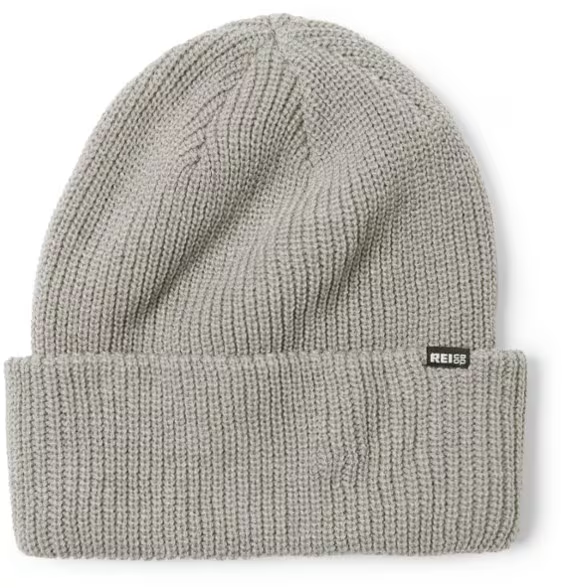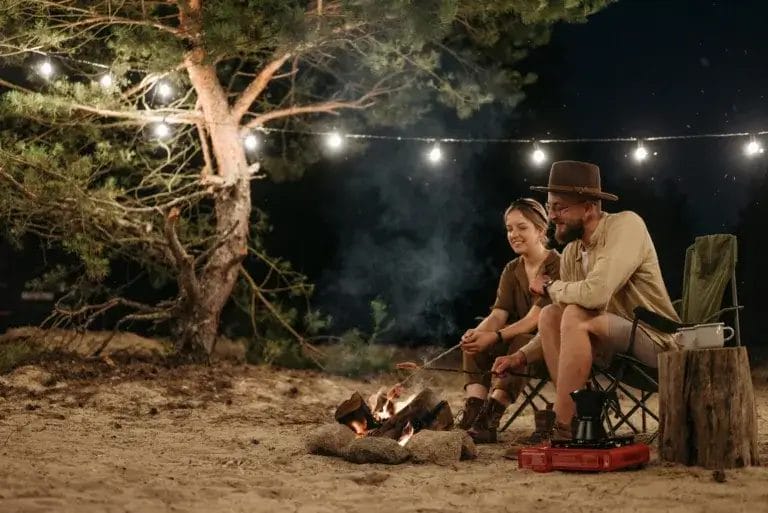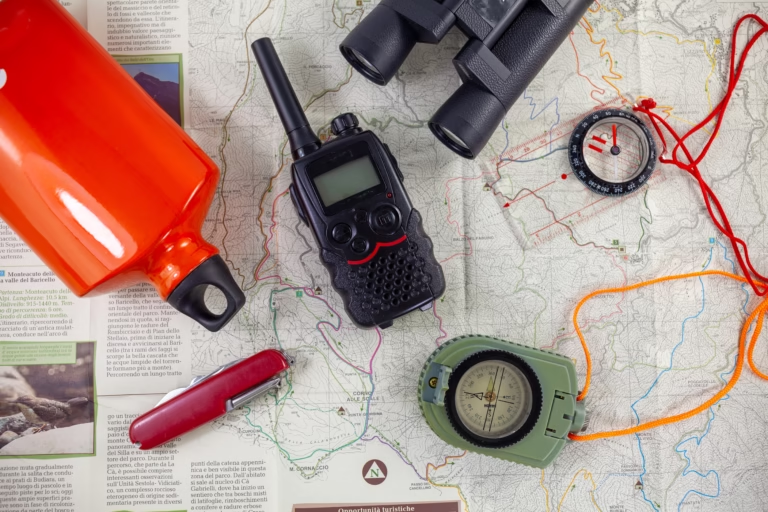Cozy Fall Camping Essentials: Stay Warm, Safe, and Comfortable Outdoors
Fall camping holds a special place in my heart. There’s just something magical about those crisp mornings, golden leaves under your boots, and the way campfire smoke lingers in that unmistakable autumn air.
After years of exploring campgrounds during the shoulder season, I’ve come to realize that being prepared can make or break your trip. It’s wild how quickly a dreamy getaway can turn into a shivering, soggy mess if you forget the basics.

The key to successful autumn camping is having the right gear to stay warm, dry, and comfortable when temperatures dip. I’ve spent a few October nights in the mountains with a summer sleeping bag – not my finest hour. That’s when I learned the hard way what matters when the mercury drops.
From a shelter that keeps you cozy to layering tricks for unpredictable weather, the right cozy fall camping essentials can change your outdoor experience. I’ll share what’s worked for me, plus the gear that’s never let me down on chilly autumn nights.
Key Takeaways
- Layering and insulation are crucial for warmth during unpredictable fall weather.
- Essential gear includes weatherproof shelter, warm sleeping systems, and reliable cooking equipment.
- Comfort items like camp chairs, blankets, and good lighting make autumn camping way more enjoyable.
Must-Have Shelter for Fall Camping

Your tent is your fortress when autumn weather turns wild. The right setup, with solid weatherproofing and a few comfort tweaks, can turn a cold night into a cozy memory.
Keeping Hands, Feet, and Head Warm
Your extremities lose heat first, so I never skip the accessories. My head, hands, and feet get special attention during fall camping prep.
Wool hiking socks prevent cold, damp feet that can ruin any outdoor adventure. I pack three pairs minimum – one to wear, one to sleep in, and one backup.
Smartwool Performance Hike Crew Socks offer great warmth and hold up well for active wear. If you’ve ever tried to dry out soggy socks over a campfire, you’ll know why I’m so picky about these.
All-day comfort and durability, Smartwool Performance Hike Light Cushion crew socks are packed with fan-favorite tech to keep your feet happy.
For my head, I choose synthetic beanies over wool. They feel softer and stretch better, which honestly just makes them more comfortable for me.
A REI Ribbed Watch Cap keeps my head warm without making me overheat. Breathability matters, especially when you’re hiking or moving around camp.
Soft, breathable, and stretchy warmth, which is why it's the one you'll grab and go with every day.
Gloves need versatility for camp tasks. I carry thin liner gloves for dexterity and thicker insulated gloves for warmth.
The liner gloves work perfectly when I need to use my phone or tie knots. Having options means I don’t have to choose between warm fingers and getting things done.
Insulated camp booties transform cold mornings into cozy experiences. I slip them on as soon as I wake up, no more icy feet on cold tent floors.
They give me enough traction for those early bathroom runs and keep me toasty while I make coffee. Trust me, your feet will thank you.
Campfire Comforts: Warming Up Around the Flames
Nothing beats the magic of gathering around a crackling campfire on those crisp fall evenings. The right prep with quality firewood and fire starters makes all the difference.
Staying safe keeps everyone comfortable and worry-free. I’ve seen enough mishaps to know it’s worth the effort.
Firewood and Fire Starters
Not all firewood is created equal, especially on chilly October nights when you crave steady warmth. Hardwoods like oak, maple, and hickory burn longer and hotter than softwoods.
My go-to strategy? Bring a mix of wood types. I start with dry kindling and small softwood pieces to get things going fast.
Then I add hardwood logs that’ll keep us warm for hours. It’s a little extra weight, but worth it.
I never rely on just matches anymore. Waterproof matches, a reliable lighter, and fire starter cubes are my holy trinity.
I always pack some fire starters and waterproof matches as backup. You don’t want to get caught in the rain with nothing but soggy matches.
Each kit contains 12 rainproof and waterproof Hurricane Matches, 3 Sweetfire Fire Starters, and replaceable strikers.
Many campgrounds sell firewood on-site, but I call ahead to check. Some areas ban outside wood because of invasive species, so it’s always good to ask first.
Pro tip: Newspaper and dry pine needles make excellent natural fire starters. I collect them during setup when the weather’s still nice.
Campfire Safety and Setup
Safety might not sound thrilling, but a well-built fire really does make everything better. I always clear a 10-foot radius around my fire pit – no leaves, no branches, nothing flammable.
The classic log cabin or teepee structure works best for fall camping. I build a little nest of tinder, surround it with kindling, and stack bigger pieces in a square or cone shape. That airflow keeps the fire happy.
Water and a shovel stay within arm’s reach, always. I’ve seen wind pick up out of nowhere and send sparks flying; it’s always better to be safe than sorry.
Campgrounds usually provide metal fire rings, but I check them for damage or debris before lighting up. It’s a quick habit that can save a lot of trouble.
Fire restrictions change with the seasons, so I check with rangers before my trip. Some places ban ground fires during dry spells, even in fall.
Before bed, I make sure every ember is out. I touch the ashes to check if they’re cold. I know it’s safe.
Favorite Fall Campfire Moments
There’s something magical about those first few minutes when the fire really catches. Everyone drifts closer, faces lit by the glow, and you can just feel the day’s chill melt away.
Making s’mores never gets old, but fall opens up so many more possibilities. I like to bring ingredients for hot chocolate, mulled cider, and even campfire popcorn.
The smell of cinnamon and apples with wood smoke? That’s the stuff memories are made of. I can’t help but smile just thinking about it.
My favorite part is around 8 PM, when it’s truly dark and someone inevitably starts telling stories. Suddenly, hours have passed, and nobody wants to leave the fire.
Someone usually brings out a guitar or harmonica. It’s the perfect soundtrack for autumn evenings.
I’ve noticed that fall campfires create an irresistible gathering spot. Even the shyest kids open up when marshmallows are roasting.
Stargazing is incredible once the fire dies down. Fall’s clear skies reveal constellations you can’t see in summer’s haze.
Essential Cooking and Dining Gear

A reliable camp stove becomes your best friend when temperatures drop. When building a campfire gets tricky, smart meal prep keeps you warm and well-fed without spending all day cooking.
Choosing a Reliable Camp Stove
I learned this lesson the hard way on a cold October trip when my cheap stove quit halfway through dinner. Now, I never skimp on this essential piece of gear.
Canister stoves are my usual pick for fall camping. They light easily in the cold and burn clean.
4 Season Dual Mode Camp Remote Canister Stove
I prefer models with wider bases; they’re more stable when you’re wearing gloves and fumbling around. No one wants their soup toppling into the dirt.
Liquid fuel stoves perform better when it’s really cold, like below 20°F. They’re my backup for those frosty nights, though they do take more maintenance and can get messy.
Here’s what I look for in a camp stove:
- Wind resistance with built-in shields
- Adjustable flame control for simmering soups
- Compact design that fits my cookware
- Quick ignition that works with cold fingers
I always stash a backup lighter and matches in waterproof containers. Even the best stove won’t help if you can’t get it lit in the wind.
Meal Prep Tips for Chilly Weather
Cold weather camping calls for hearty, warming meals. I plan meals that cook quickly and clean up easily, Nobody wants to wash dishes in freezing water.
One-pot meals are my go-to. Pasta with pre-cooked sausage, or a chunky stew that simmers while I set up camp, always hits the spot.
Prepping ingredients at home saves so much hassle. I chop veggies and pack them in freezer bags, and I pre-season meats before leaving. Less time with cold hands, more time enjoying the fire.
Hot beverages are non-negotiable. I bring instant coffee, hot chocolate, and herbal teas.
A French press that retains heat makes morning coffee feel like a treat. There’s just something about sipping coffee in the crisp air that makes you feel alive. We’ve been using our Stanley for years and it’s awesome, highly recommend.
Equal parts rugged and refined, this all-inclusive gear set packs light to make a piping hot pot of coffee or warm your favorite soup in mere minutes. It features a stainless steel pot with a sleek French press insert so you can brew, boil, and cook wherever you go.
For lasting energy, I pack foods like:
- Complex carbs—oatmeal and whole grain pasta
- Healthy fats—nuts and olive oil
- Protein—keeps you full for hours
Even with a camp stove, I love cooking simple meals over the fire. S’mores just taste better after a day of autumn hiking.
Lighting and Nighttime Essentials
Fall days end earlier than you think. I’ve learned this the hard way – sunset at 6 PM sneaks up fast when you’re busy setting up camp.
A good headlamp becomes your best friend once the light fades. The right gear can turn a cozy evening into a night you’ll remember, instead of a clumsy stumble-fest.
Picking the Best Headlamp
I can’t stress enough how much a quality headlamp matters for fall camping. After trying a bunch of models, I’ve realized battery life matters more than sheer brightness when it’s cold.
My favorite headlamp puts out about 400 lumens. That’s plenty for cooking or finding the bathroom without blinding your friends.
Here’s what I look for:
- Red light mode (saves night vision)
- Waterproof rating (IPX4 minimum)
- Adjustable beam angle
- Battery level indicator
Cold weather drains batteries fast. I keep extras in my sleeping bag to stay warm, and always use lithium, which lasts longer in the cold than alkaline ones.
The headband should be comfy even over a warm hat. I learned this the hard way when mine kept sliding off my beanie one frosty night.
BLACK DIAMOND Astro, Dimmable Battery Powered IPX4 Rainproof Headlamp for Camping, Hiking, Running, Work, Travel,
Navigating Camp After Dark
Setting up good lighting around camp transforms those long fall evenings into something magical. I make a lighting plan before it gets dark, take the time, it’s worth it.
My camp lighting setup usually includes:
- Solar string lights around the tent
- Battery-powered lantern for the picnic table
- Headlamp for personal use
- Glow sticks for emergencies
Most campgrounds don’t light the trails or bathrooms much. I always do a quick walk-through in daylight to find roots, rocks, or anything else I might trip over later.
I keep a small flashlight clipped in my jacket pocket. If my headlamp dies, I won’t be stuck using my phone and draining its battery.
Hanging your lantern from a tree works better than setting it on the table. It attracts fewer bugs that way. It’s the little tricks you pick up after a few trips.
Staying Comfortable and Safe at Camp

Creating a comfortable base camp makes the difference between an epic adventure and a miserable night. Smart seating, a well-stocked first aid kit, and a trusty water system are the backbone of any fall camping trip.
Cozy Camp Chairs and Seating
Let me tell you, sitting on a log around the campfire sounds charming until the cold creeps in. My first autumn camping trip left me with a sore back and a chill that stuck around for days.
Now I never leave home without a quality camp chair to keep me off the cold, damp ground. Those packable chairs are surprisingly supportive, even though they fold down small.
The steel frame spreads out your weight, so you don’t end up sinking or damaging your tent floor. I’m picky about my seats, so here’s what matters most to me:
- Wide feet for stability
- 300+ pound weight capacity
- Quick setup and breakdown
- Carry case included
I love when gear pulls double duty. My camp chair gives me a spot to stash boots underneath and a clean perch for lacing up in the morning.
The low-back style still supports my lower back, which is a lifesaver during those long, meandering fireside chats that go late into the night.
First Aid Kit Must-Haves
Fall brings its own set of camping mishaps. I’ve had everything from scraped knees gathering firewood to altitude headaches on mountain trips.
My first aid kit always includes the basics:
Medications:
- Pain relievers (ibuprofen and acetaminophen)
- Antihistamines for allergies
- Anti-diarrheal meds
- Personal prescriptions
Wound care:
- Adhesive bandages (all sizes)
- Gauze pads and tape
- Antiseptic wipes
- Antibiotic ointment
Tools:
- Tweezers (splinters, anyone?)
- Scissors
- Instant cold packs
- Thermometer
I stash it all in a waterproof box with labels. One October, a friend slipped on wet leaves and banged up his knees. Having everything sorted and within reach made it easy to help him out fast.
140 Piece Small First Aid Medical Kit for Car, Home, Office, Travel, Camping, Sports, Outdoor, School
Water Filtration and Hydration
Staying hydrated in cool weather is sneakier than you’d think. I’ve paid the price for not drinking enough water – headaches and sluggishness are no fun.
I trust a lightweight pump filter to clean water from streams and lakes. Purification tablets ride along as backup, just in case.
My hydration hacks:
- Drink water often, even if you’re not thirsty
- Use insulated bottles so your water doesn’t freeze
- Electrolyte packets for longer days
- Stash water bottles inside your sleeping bag overnight
Hot drinks are a must for morale and warmth. I bring a tiny coffee maker and a handful of tea bags for those slow, golden mornings by the fire.
If I’m heading into the mountains, I pack extra water. Dry air at higher altitudes means dehydration sneaks up on you, even when you’re not sweating buckets.
Stash it it your pocket and forget it until you need it. The 5.2 oz. MSR TrailShot Pocket-Sized water filter lets you refill your reservoir or drink directly from the source without lying in the dirt.
Weatherproofing and Extra Comforts

Fall weather keeps you guessing, so I never skip rain gear and cozy extras. A packable down jacket and something waterproof are my go-tos, and a few personal comfort items make camp feel like a second home.
Rain Gear and Drying Out
My first October in Oregon taught me a lesson – always expect rain. The forecast was “partly cloudy,” but I woke up to a downpour that lasted two days straight.
Rain Protection I Swear By:
- Waterproof jacket with a hood and pit zips
- Rain pants for soggy days
- Pack cover or dry bags for my gear
- Quick-dry towels
My rain jacket that folds into its own pocket? Total game-changer. It barely takes up space.
Lightweight Waterproof Raincoat with Hood
A down jacket layers perfectly under rain gear, but I’m careful to keep it dry so it doesn’t lose its warmth.
Drying Out:
I set up a tarp or use my car’s tailgate as a makeshift drying rack. Spare socks and underwear always go in a waterproof bag. Staying dry is non-negotiable – once your clothes are wet, you’re in for a rough night.
Bonus Cozy Touches for Fall
These small comforts turn my campsite into a true autumn retreat. I’ve picked up these ideas after years of chasing red and gold leaves across the country.
Comfort Upgrades:
- Battery string lights for that magical glow
- Insulated camp chairs or just a seat cushion
- Hot water bottles for tucking into your sleeping bag
- Portable camp table for meals and card games
My top pick? A small camp rug. It keeps things cleaner and instantly makes the tent feel more inviting.
Extra Warmth:
Hand warmers are lifesavers on frosty mornings. I drop them in my boots while I pack up camp.
A thick camp blanket works as insulation or a cozy shawl by the fire. I always look for one with a water-resistant side so I can sit on damp logs without worry.
Food & Drink Comfort:
I never skip packing cocoa or cider mix. There’s just something about sipping something hot under the stars that makes the whole trip feel a little more magical.
Frequently Asked Questions

Fall camping throws a few curveballs, so it pays to prep and pack smart. Here are some questions I hear all the time about staying warm and making memories around the fire.
What gear should I pack for staying warm while camping in the fall?
Layering is my not-so-secret weapon once the temps start dipping. I start with merino wool base layers, add a fleece, and always bring a waterproof shell for surprise storms.
For sleeping, I go with a bag rated at least 10 degrees colder than the forecast. Trust me, a good sleeping pad with a high R-value is worth every penny; the earth will steal your warmth if you let it.
My must-haves include wool socks, a beanie, and insulated gloves. I always pack more layers than I think I’ll need—fall weather loves to surprise.
How can I make my fall camping trip feel extra cozy?
Little comforts go a long way. My wearable camping blanket with sleeves and a hood lets me stay warm while moving around camp.
String lights powered by a battery pack totally transform the vibe. That warm glow just makes camp feel like home.
A comfy chair gets me off the cold ground and gives me the perfect spot for morning coffee. I also throw down a little outdoor rug to make things feel snug and keep my feet warmer.
Are there any must-have items for cooking at a fall campsite?
My cast iron Dutch oven is my go-to for fall; it holds heat like a champ and makes killer stews, chili, and even bread right over the fire.
I always bring a backup camp stove because windy weather can make fire cooking a pain. A windscreen has saved dinner more than once when the breeze picked up.
Hot drinks are a must. I pack a sturdy French press, plenty of coffee, tea, and cocoa. Insulated mugs keep my drinks warm longer, which is a huge bonus when it’s chilly.
What are some tips for ensuring a comfortable sleep during a chilly autumn night under the stars?
Going to bed warm is everything. I usually do some jumping jacks or a brisk walk before crawling into my bag to get the blood flowing.
Loose, dry layers work best for sleeping. I keep a special pair of wool socks just for bed; cold feet are the worst.
On really cold nights, a hot water bottle or heated pad is a lifesaver. I fill a bottle with hot water from the stove and tuck it in my sleeping bag a few minutes before bedtime.
Can you suggest some activities to make my fall camping experience memorable and fun?
Fall hikes are pure magic. I never forget my camera; early morning walks are when the sunlight through the leaves is at its best.
Campfire stories just hit different in autumn. I pack a book of ghost stories or get everyone to share their own; something about the crisp air makes tales more exciting.
Stargazing is unreal in fall. I use a stargazing app and a red flashlight so I can spot constellations without ruining my night vision.
How do I keep my tent dry and comfortable amidst fall weather unpredictability?
I always toss a big, trusty tarp in my pack, one that’s definitely bigger than my tent’s footprint. There have been so many times when setting it up as a makeshift vestibule or extra rain cover turned out to be a lifesaver during those sneaky fall downpours.
Ventilation matters, even when the air feels chilly. I like to crack the tent vents open just a bit and, if I’m feeling fancy, I’ll pop in a little battery-powered fan to keep the air moving.
That way, you get less condensation inside without freezing yourself out. It’s a small tweak, but it really helps.
I always stash a few extra towels in waterproof stuff sacks. Trust me, having a dry towel handy, especially when you wake up to surprise dew or a bit of dampness inside, is a game-changer.

















